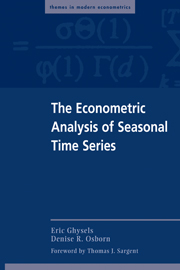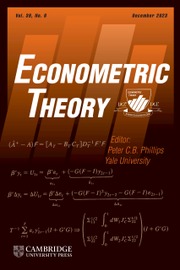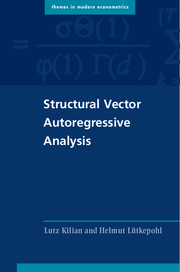Applied Time Series Econometrics
Time series econometrics is used for predicting future developments of variables of interest such as economic growth, stock market volatility or interest rates. A model has to be constructed, accordingly, to describe the data generation process and to estimate its parameters. Modern tools to accomplish these tasks are provided in this volume, which also demonstrates by example how the tools can be applied.
- The treatment includes methodological advances on the subject matter in a particularly cohesive fashion
- Emphasizes applications in economics and finance and goes through a number of empirical studies in some detail
- The user friendly software JMulTi is provided to supplement the text which may be used in advanced coursework
Product details
August 2004Paperback
9780521547871
352 pages
229 × 152 × 20 mm
0.49kg
69 b/w illus. 38 tables
Available
Table of Contents
- Preface
- Notation and abbreviations
- List of contributors
- Part I. Initial Tasks and Overview Helmut Lütkepohl:
- 1. Introduction
- 2. Setting up an econometric project
- 3. Getting data
- 4. Data handling
- 5. Outline of chapters
- Part II. Univariate Time Series Analysis Helmut Lütkepohl:
- 6. Characteristics of time series
- 7. Stationary and integrated stochastic processes
- 8. Some popular time series models
- 9. Parameter estimation
- 10. Model specification
- 11. Model checking
- 12. Unit root tests
- 13. Forecasting univariate time series
- 14. Examples
- 15. Where to go from here
- Part III. Vector Autoregressive and Vector Error Correction Models Helmut Lütkepohl:
- 16. Introduction
- 17. VARs and VECMs
- 18. Estimation
- 19. Model specification
- 20. Model checking
- 21. Forecasting VAR processes and VECMs
- 22. Granger-causality analysis
- 23. An example
- 24. Extensions
- Part IV. Structural Vector Autoregressive Modelling and Impulse Responses Jörg Breitung, Ralf Brüggemann and Helmut Lütkepohl:
- 25. Introduction
- 26. The models
- 27. Impulse response analysis
- 28. Estimation of structural parameters
- 29. Statistical inference for impulse responses
- 30. Forecast error variance decomposition
- 31. Examples
- 32. Conclusions
- Part V. Conditional Heteroskedasticity Helmut Herwartz:
- 33. Stylized facts of empirical price processes
- 34. Univariate GARCH models
- 35. Multivariate GARCH models
- Part VI. Smooth Transition Regression Modelling Timo Teräsvirta:
- 36. Introduction
- 37. The model
- 38. The modelling cycle
- 39. Two empirical examples
- 40. Final remarks
- Part VII. Nonparametric Time Series Modelling Rolf Tschernig:
- 41. Introduction
- 42. Local linear estimation
- 43. Bandwidth and lag selection
- 44. Diagnostics
- 45. Modelling the conditional volatility
- 46. Local linear seasonal modelling
- 47. Example I: average weekly working hours in the United States
- 48. Example II: XETRA dax index
- Part VIII. The Software JMulTi Markus Krätzig:
- 49. Introduction to JMulTi
- 50. Numbers, dates and variables in JMulTi
- 51. Handling data sets
- 52. Selecting, transforming and creating time series
- 53. Managing variables in JMulTi
- 54. Notes for econometric software developers
- 55. Conclusion
- References
- Index.







